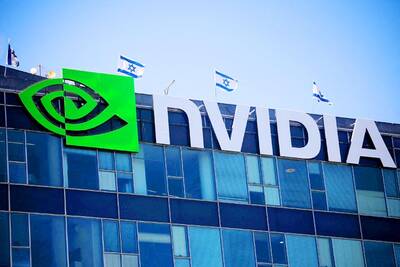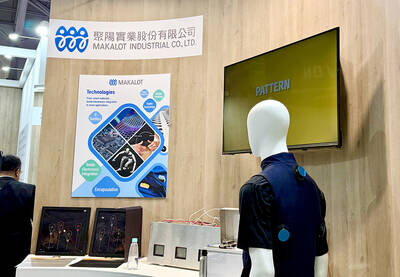The government’s business climate monitor last month flashed “green,” as the economy emerged from five months of slowdown caused by the COVID-19 pandemic, the National Development Council said yesterday.
Almost all component measures registered positive cyclical movements except for the nonfarm payroll, which remained sluggish, council research director Wu Ming-huei (吳明蕙) told a news conference in Taipei.
“The latest data suggest the economy finally resumed stable growth after the pace of uptick grew increasingly evident,” Wu said.
The total score gained 5 points to 26, catapulting the monitor to the growth zone of 23 to 31.
The council uses a five-color system to portray the nation’s economic state, with “green” indicating steady growth, “red” suggesting overheating and “blue” signaling a recession. Dual colors mean it is in transition.
The council is to continue closely monitoring the economy at home and abroad to see if the growth is sustainable or just an isolated episode, Wu said.
The worst is over, but uncertainty warrants continued caution, Council Deputy Minister Cheng Cheng-mount (鄭貞茂) said.
Many are concerned about a potential resurgence of COVID-19 infections in the fall and winter, Cheng said, adding that the US presidential election and US-China trade dispute could shake up the economy.
The index of leading indicators, used to gauge the economic outlook in the coming six months, rose 1.72 percent to 104.67, bolstered by better export orders, manufacturing sentiment, labor accession rates and new construction floor space, the council said.
The sub-index on semiconductor equipment imports was the only measure that posted negative cyclical movement from one month earlier, it said.
Altogether, the leading indicators’ series have picked up for the past five months, which is a positive sign, Wu said.
The index of coincident indicators, which reflects the current economic situation, edged up 0.71 percent for the third consecutive month to 100.77, the council said.
Exports, industrial output and power consumption, as well as wholesale, retail and restaurant revenues, showed improvement, but employment and machinery equipment imports lost some traction, it said.
Although the coincident indicators’ series climbed 1.55 percent for three months in a row, the magnitude of increase was not strong enough to suggest a concrete recovery, Wu said.
It is more urgent that local firms upgrade and adapt to new business models in the post-pandemic era so that economic activity can recover better momentum, Cheng said.

Shares in Taiwan closed at a new high yesterday, the first trading day of the new year, as contract chipmaker Taiwan Semiconductor Manufacturing Co (TSMC, 台積電) continued to break records amid an artificial intelligence (AI) boom, dealers said. The TAIEX closed up 386.21 points, or 1.33 percent, at 29,349.81, with turnover totaling NT$648.844 billion (US$20.65 billion). “Judging from a stronger Taiwan dollar against the US dollar, I think foreign institutional investors returned from the holidays and brought funds into the local market,” Concord Securities Co (康和證券) analyst Kerry Huang (黃志祺) said. “Foreign investors just rebuilt their positions with TSMC as their top target,

H200 CHIPS: A source said that Nvidia has asked the Taiwanese company to begin production of additional chips and work is expected to start in the second quarter Nvidia Corp is scrambling to meet demand for its H200 artificial intelligence (AI) chips from Chinese technology companies and has approached contract manufacturer Taiwan Semiconductor Manufacturing Co (TSMC, 台積電) to ramp up production, sources said. Chinese technology companies have placed orders for more than 2 million H200 chips for this year, while Nvidia holds just 700,000 units in stock, two of the people said. The exact additional volume Nvidia intends to order from TSMC remains unclear, they said. A third source said that Nvidia has asked TSMC to begin production of the additional chips and work is expected to start in the second

REVENUE PERFORMANCE: Cloud and network products, and electronic components saw strong increases, while smart consumer electronics and computing products fell Hon Hai Precision Industry Co (鴻海精密) yesterday posted 26.51 percent quarterly growth in revenue for last quarter to NT$2.6 trillion (US$82.44 billion), the strongest on record for the period and above expectations, but the company forecast a slight revenue dip this quarter due to seasonal factors. On an annual basis, revenue last quarter grew 22.07 percent, the company said. Analysts on average estimated about NT$2.4 trillion increase. Hon Hai, which assembles servers for Nvidia Corp and iPhones for Apple Inc, is expanding its capacity in the US, adding artificial intelligence (AI) server production in Wisconsin and Texas, where it operates established campuses. This

Garment maker Makalot Industrial Co (聚陽) yesterday reported lower-than-expected fourth-quarter revenue of NT$7.93 billion (US$251.44 million), down 9.48 percent from NT$8.76 billion a year earlier. On a quarterly basis, revenue fell 10.83 percent from NT$8.89 billion, company data showed. The figure was also lower than market expectations of NT$8.05 billion, according to data compiled by Yuanta Securities Investment and Consulting Co (元大投顧), which had projected NT$8.22 billion. Makalot’s revenue this quarter would likely increase by a mid-teens percentage as the industry is entering its high season, Yuanta said. Overall, Makalot’s revenue last year totaled NT$34.43 billion, down 3.08 percent from its record NT$35.52